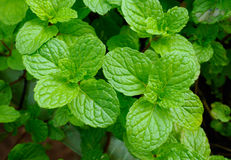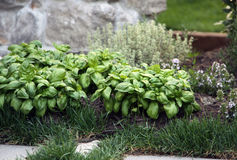The weather is having a field day; packing a punch with gale force winds and taking us from sunny highs to chilly lows sometimes within a few hours. Winter is coming…….. and with it comes roast dinners, warming soups and stews.
Which brings me to Mint: Mint sauce and lamb roast, minted pea soup, mint in mashed potatoes, mint to give your carrots a lift!
Mint is known to have originated in Asia and the Mediterranean region and it’s benefits have been noted throughout history.
- The Greeks used to clean their banqueting tables with it and added it to their baths to stimulate their bodies.
- The Romans used it in sauces as an aid to digestion and as a mouth freshener.
- Medieval monks drew on the herb for its culinary and medicinal properties.
- In many cultures, mint symbolised hospitality and was offered as a sign of welcome and friendship to guests.
Mint derives its name from the ancient Greek mythical character Minthe. According to Greek myth, Minthe was a river nymph. Hades, the God of the Underworld, fell in love with Minthe and when Persephone, Hades’s wife, found out, she turned Minthe into a plant, so that everyone would walk all over her and crush her. Unable to undo the spell, Hades gave Minthe a magnificent aroma so that he could smell her and be near her when people trod on her.
Mint’s essential oil is widely used in manufactured products such as toothpaste, shower gel and medicines for its antibacterial and cooling qualities.
TOP INTERESTING FACTS:
- Mint comes in over 30 varieties.
- Ancient Romans and Greeks used mint to flavour cordials and fruit compotes and also used it in baths and perfumes. They believed eating mint would increase intelligence!
- The scent of mint was supposed to stop a person from losing his temper!
- Ancient Hebrews used to scatter mint over the synagogue floor for its scent and it was used to sweeten the often rank smell of medieval halls.

- Peppermint is one of the oldest and best tasting home remedies for indigestion. Today mint is still used to alleviate flatulence and aid the digestion (yes, after dinner mints are good for you). Studies show that peppermint lessens the amount of time food spends in the stomach by stimulating the gastric lining to produce enzymes which aid digestion.
- Mexicans call mint Yerba Bueno or good herb.
- Mint has been found in Egyptian tombs from as far back as 1000 BC.
- One drum of oil (weighing about 180kg) can be used to flavour approximately 5 million sticks of chewing gum or 400,000 tubes of toothpaste.
- Research conducted at the University of Cincinnati found that sniffing mint improves concentration; several Japanese companies pipe small amounts of mint through their air conditioning systems to invigorate workers and improve productivity.
What are the differences between Common Mint and Wild Mint (Winter Mint):
- Wild Mint’s leaves are darker, more serrated, have stronger venation and are slightly wider than Common mint.
- Wild Mint has a stronger smell and flavour
- Wild Mint is slightly more disease resistant than Common Mint.
Acknowledgements: TopFoodFacts.com, Wisconsinmint.org, Living Herbs Fact Sheets and staff











